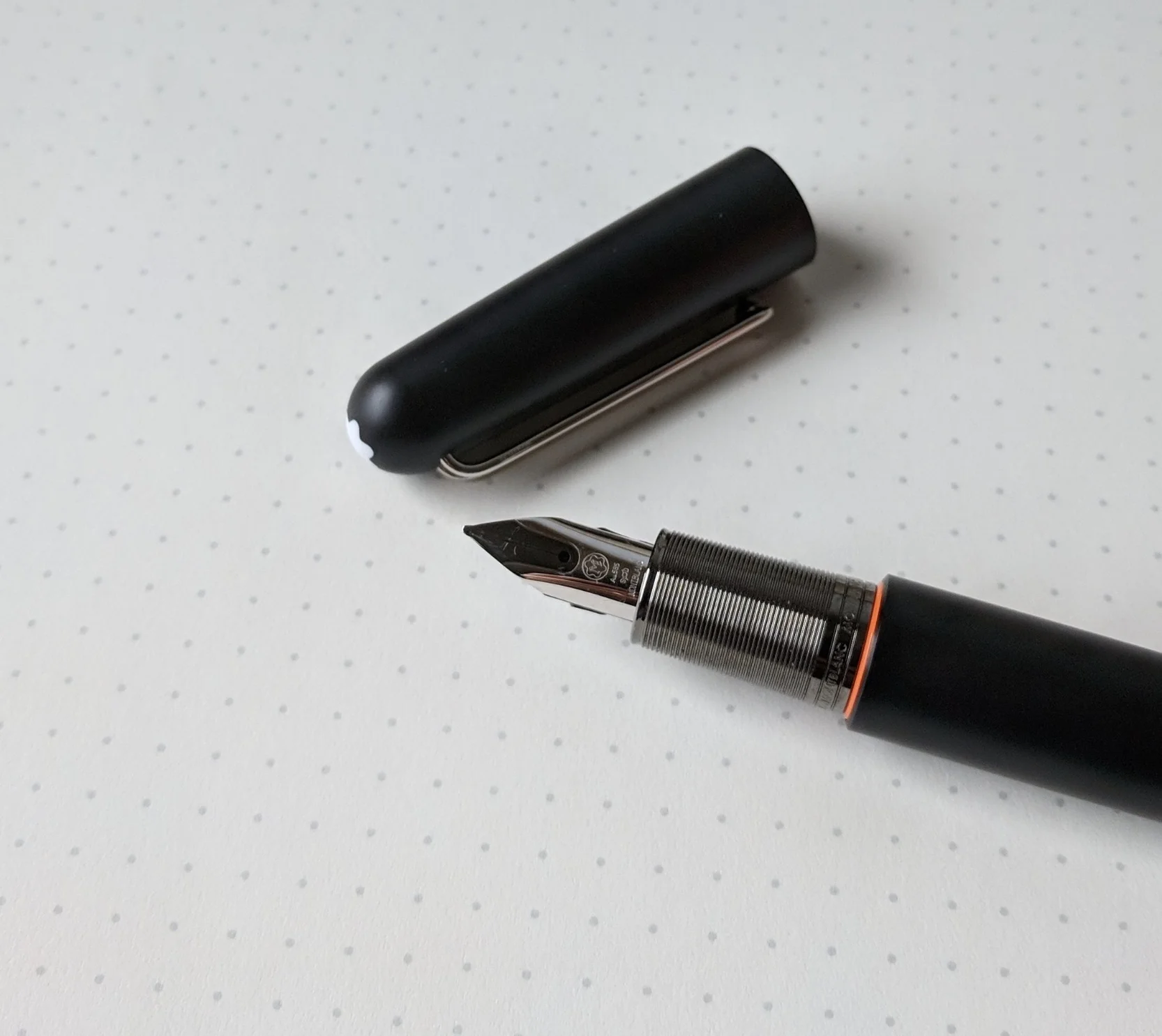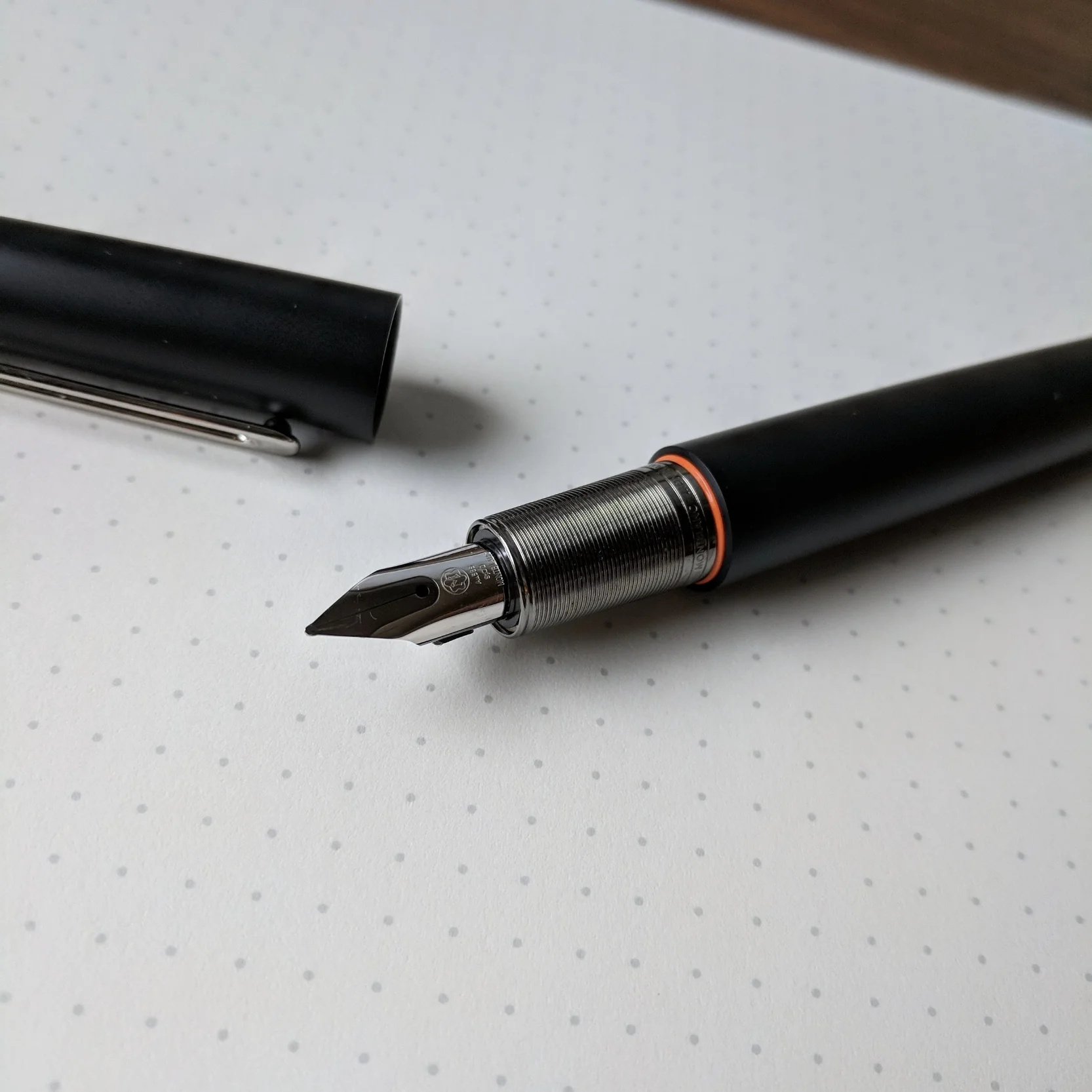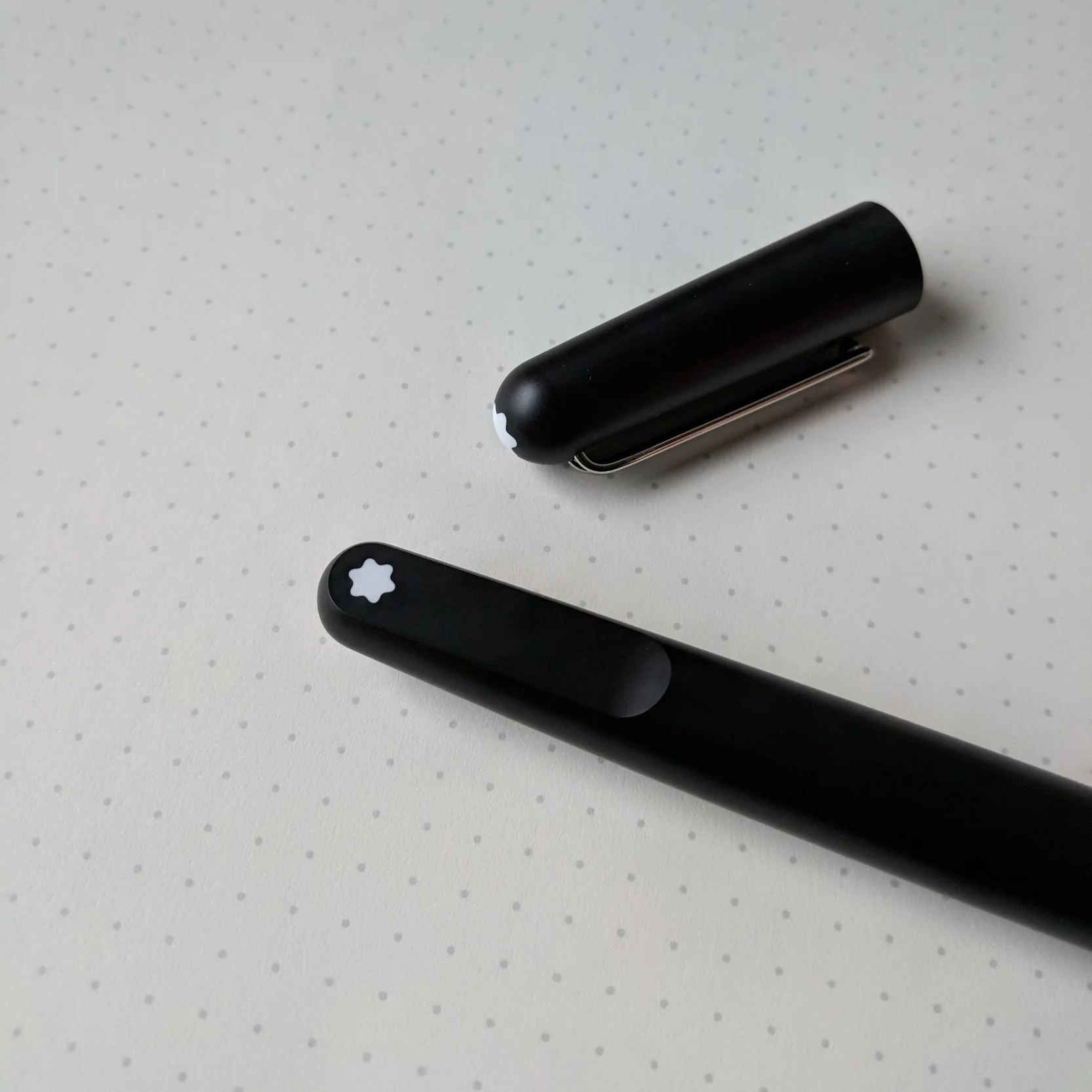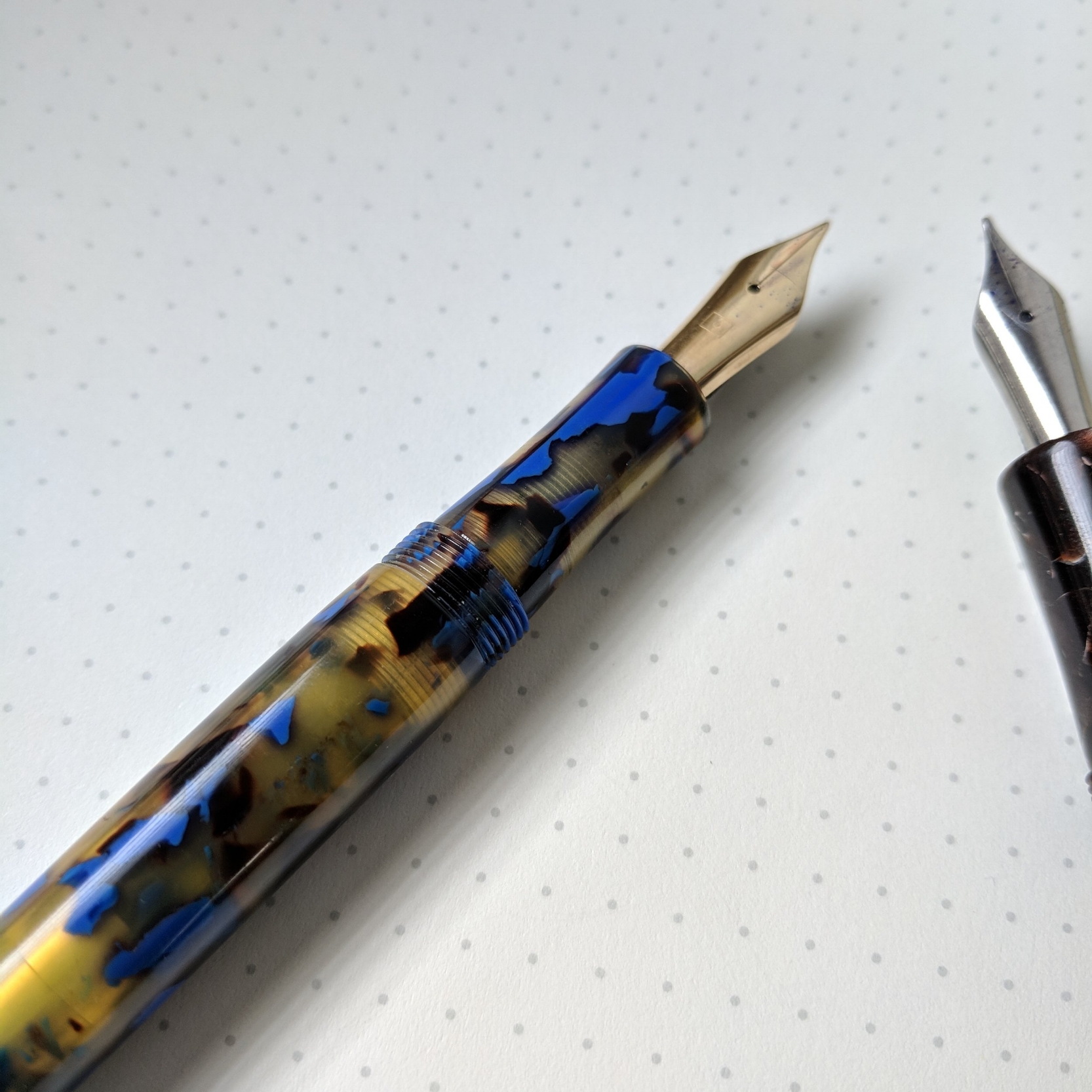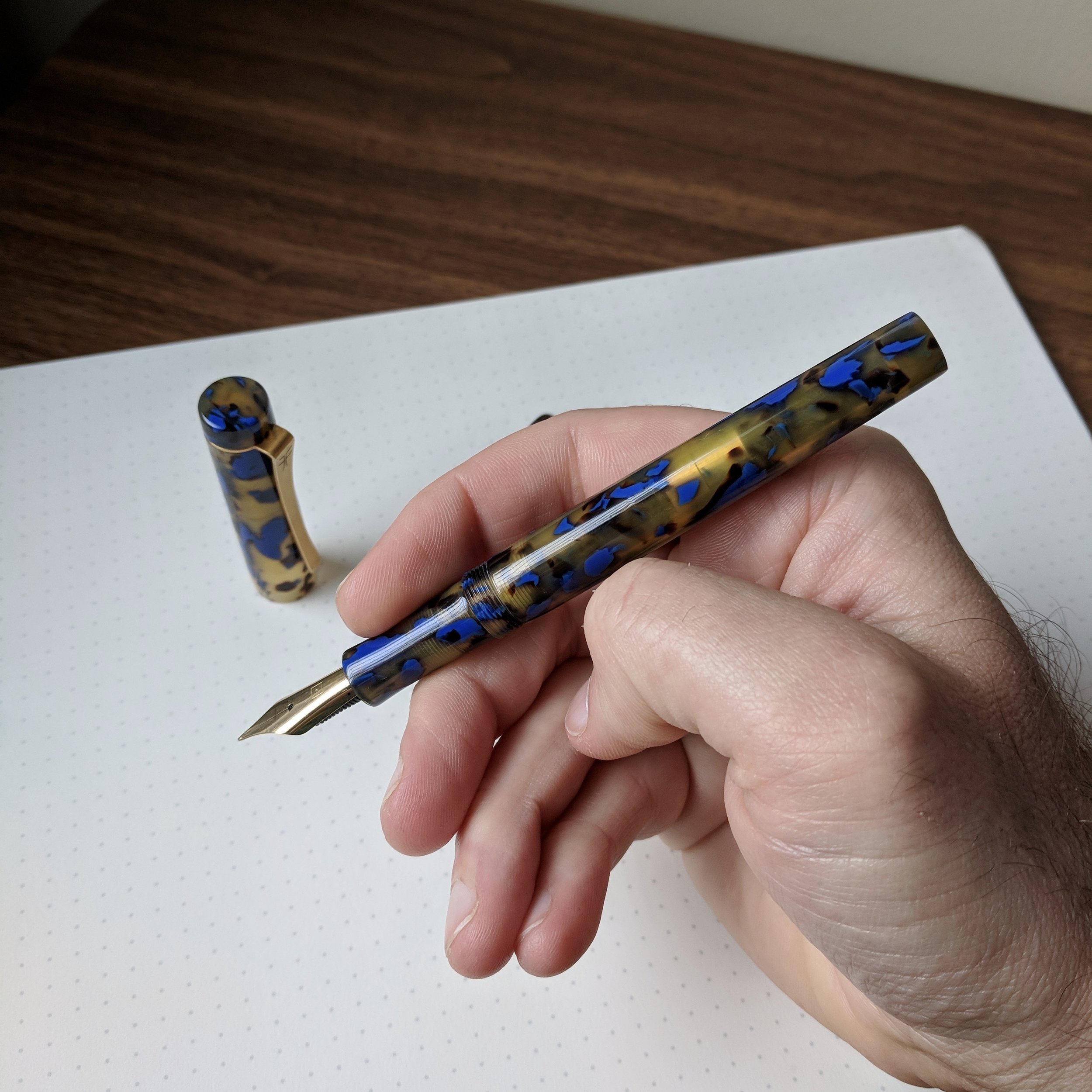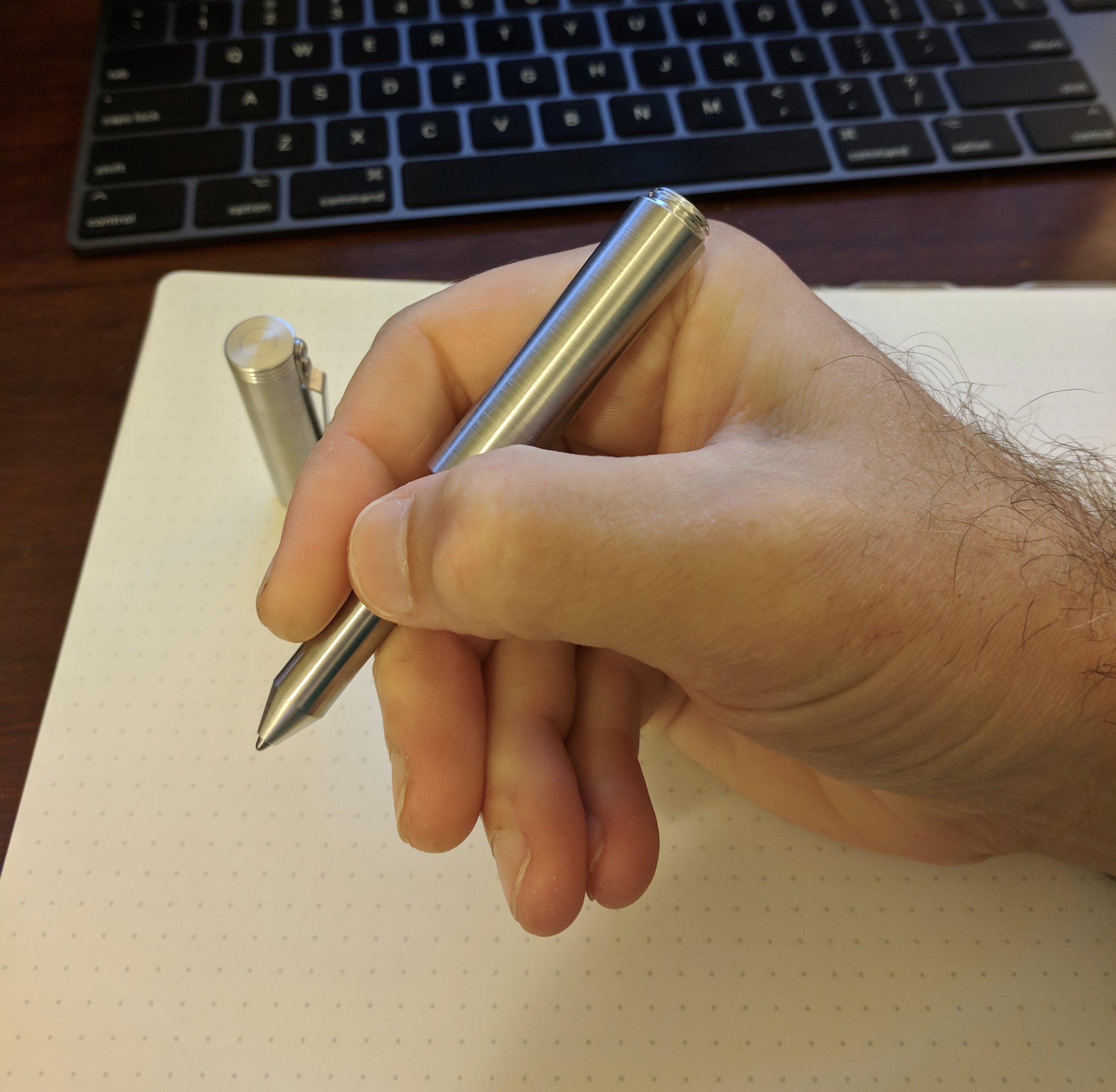Once again, I’m a bit late to the party here in reviewing a pen that’s been out for a while - the Montblanc M by Marc Newson, a collaboration between the venerable (and somewhat staid) German brand and the industrial designer, most recently known for his status as a senior member of Apple’s design team. The version featured here is from Montblanc’s “Ultra Black” series, which means matte black resin and ruthenium trim - a combination that’s a personal favorite of mine. (This isn’t the first “Ultra Black” pen I’ve reviewed. You can check out some shots of my 146 Ultra Black here.)
As one would expect from the “Ultra Black” designation, this pen features a ruthenium/rhodium plated, two-toned 14k gold nib, available in fine or medium. The particular pen I’m reviewing here has a fine nib, which writes a relatively wet line with just a touch of tooth. I wouldn’t call it scratchy, just tactile. The textured ruthenium-plated section is comfortable to hold, and the metal ridges offer a nice gripping surface. The balance and overall ergonomics are also nice, though as I’ll discuss further below, you can’t post the cap.
There is a fairly significant step-down from the barrel of the pen to the grip section, which isn’t sharp, but I can still feel it when writing. Note the orange highlight, which adds a pop of color and stands out nicely on the otherwise dark design.
Two aspects of the pen’s design might make this one a no-go for many people. First, the Montblanc “M” Series is a cartridge-only fountain pen. While you may be able to find a shorter converter that fits the barrel, no converter ships with this pen and Montblanc markets this pen as cartridge-only. Second, there is absolutely no ability to post this pen due to the placement of the signature feature, the “plateau” on the back of the barrel emblazoned with the snowflake.
Where Montblanc has excelled, however, is the magnetic cap, which automatically aligns the clip with the “snowflake” logo on the “plateau.” It’s quite accurate, and fun to play with. The platinum-plated clip is different from what Montblanc normally uses on their pens, adds a modern, clean look, and has great tension so that it clips easily to a shirt pocket.
A shot of the split-pronged clip and the two snowflakes. Design-wise, this is certainly a pen that’s grown on me.
Takeaways and Where to Buy
The Montblanc “M” series draws strong opinions - people tend to love this pen or actively dislike it. I think part of that is the fact that it’s such a departure from Montblanc’s standard line that the pen doesn’t appeal to the “purists” - those drawn to the more traditional Meisterstuck pens and the special and limited editions based off the Classique, 146, and 149 models. On the whole, I like this pen, but it’s probably not one that will end up in my collection in fountain pen form. The step from the body to the section bothers me a little bit, and something about the form factor seems to lend itself more to a ballpoint/rollerball than a fountain pen. For longer writing sessions, I’m not sure that this pen would be my choice, but for short jottings at work with Montblanc’s excellent ballpoint and rollerball refills, I’m still considering picking one up.
Many thanks to site sponsor Appelboom for loaning me the pen featured in this review. The Montblanc “M” series currently retails at $540 for the fountain pen version, or $400 for the ballpoint and rollerball version. Prices listed here are approximations and subject to change due to the EUR/USD exchange rate.
Disclaimer: This post contains affiliate links, as TGS is a member of Appelboom’s Affiliate Network. For more information, please see our privacy and cookie policies.
A size comparison shot, from left: Franklin-Christoph Model 20, Montblanc M Ultra Black Fountain Pen, Montblanc 146 Ultra Black, and Platinum 3776 Oshino Demonstrator.
